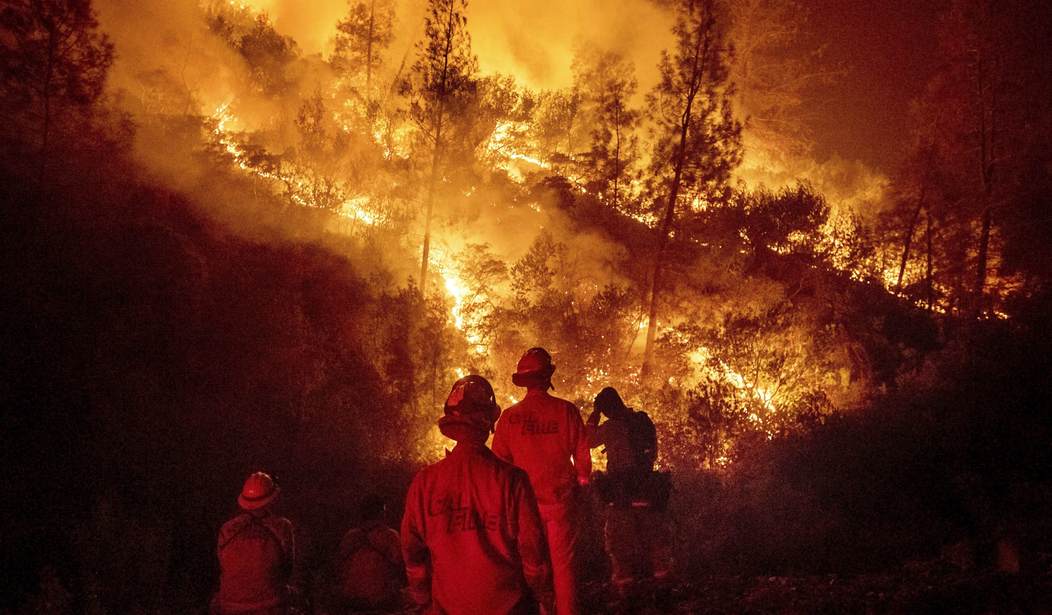Do you wonder why many of us hate our cellular providers? It’s because of incidents such as this:
The Santa Clara County Fire Department said that during its recent effort to fight California’s largest wildfire ever, one of its vehicles that used a Verizon SIM card had its connection speeds dramatically reduced and was unable to restore full-speed service until it agreed to take out a higher-speed plan.
Verizon began regularly throttling the fire department’s service shortly after the FCC repealed the net neutrality law. Before the repeal, carriers imposed data throttling only when customers used too much data and the network was congested. But the Santa Clara County Fire Department began to notice that its data was throttled each month when it exceeded 25GB shortly after the repeal took effect.
According to a report on Ars Technica, the throttling incident has been submitted as evidence in a suit seeking to reverse the repeal of the net neutrality law.
“This throttling has had a significant impact on our ability to provide emergency services,” Santa Clara County Fire Chief Anthony Bowden wrote in a declaration. “Verizon imposed these limitations despite being informed that throttling was actively impeding County Fire’s ability to provide crisis-response and essential emergency services.”
Verizon admitted that it made a mistake by not quickly restoring the regular high-speed wireless service to a fire truck that had gone over its data cap and released the following statement:
This situation has nothing to do with net neutrality or the current proceeding in court. We made a mistake in how we communicated with our customer about the terms of its plan. Like all customers, fire departments choose service plans that are best for them. This customer purchased a government contract plan for a high-speed wireless data allotment at a set monthly cost. Under this plan, users get an unlimited amount of data but speeds are reduced when they exceed their allotment until the next billing cycle. Regardless of the plan emergency responders choose, we have a practice to remove data speed restrictions when contacted in emergency situations. We have done that many times, including for emergency personnel responding to these tragic fires. In this situation, we should have lifted the speed restriction when our customer reached out to us. This was a customer support mistake. We are reviewing the situation and will fix any issues going forward.
Bowden gave an example of how Verizon’s action affected the department’s emergency response. “OES 5262 is a fire department vehicle that is deployed to large incidents as a command and control resource and used to track, organize, and prioritize routing of resources from around the state and country to the sites where they are most needed,” he explained. “OES 5262 was used to coordinate all of the local government resources deployed to the Mendocino Complex fire,” the largest wildfire ever in California’s history.
“In the midst of our response to the Mendocino Complex Fire, County Fire discovered the data connection for OES 5262 was being throttled by Verizon, and data rates had been reduced to 1/200, or less, than the previous speeds,” according to Bowden. “These reduced speeds severely interfered with the OES 5262’s ability to function effectively. My Information Technology staff communicated directly with Verizon via email about the throttling, requesting it be immediately lifted for public safety purposes.”
Verizon, however, failed to restore full-speed data service.
“Verizon representatives confirmed the throttling, but rather than restoring us to an essential data transfer speed, they indicated that County Fire would have to switch to a new data plan at more than twice the cost, and they would only remove throttling after we contacted the Department that handles billing and switched to the new data plan,” Bowden wrote.
Because Verizon would not remove the throttling immediately, it continued until the department could upgrade its plan. Fire personnel were forced to use their own personal devices for their emergency communications.
Bowden believes that Verizon is taking advantage of emergencies to force public safety agencies to sign up for more expensive plans.
“In light of our experience, County Fire believes it is likely that Verizon will continue to use the exigent nature of public safety emergencies and catastrophic events to coerce public agencies into higher-cost plans, ultimately paying significantly more for mission-critical service—even if that means risking harm to public safety during negotiations,” noted Bowden.









Join the conversation as a VIP Member